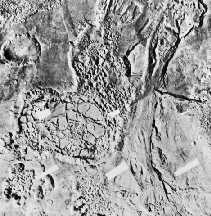This is an image showing evidence of Martian flooding.
Click on image for full size
Image from: NASA
Martian Floods
Separate from the Martian outflow channels, or the river valley networks, are large Martian lakes (600 km, or ~1000 miles across) which exhibit evidence of a periodic and catastrophic release of water in the form of floods. This evidence is found with an examination of the shorelines surrounding the lakes.
This evidence suggests the possibility of an equilibrium between the lakes and an aquifer lying close to the surface. As the lake level drops, water comes to it from the aquifer. Evaporation of water from the lake and recondensation close to the surrounding terrain would return water to the aquifer.
An analysis of the combined evidence from the Martian outflow channels, the river valley networks, and catastrophic flooding suggests two possibilities for the global Martian water cycle.
You might also be interested in:
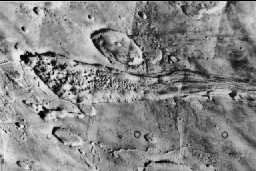
The Martian surface exhibits a large number of large, tear-drop shaped outflow channels such as the one shown in this image. Most of these are found on the slopes of the Martian volcanoes. They seem to
...more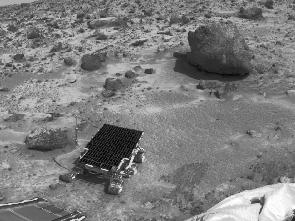
These are the findings of Mars Pathfinder. High Silica Rocks - a result from chemical analysis of the Martian rocks. suggestive of differentiated (evolved) rocks and minerals. helps establish that, like
...more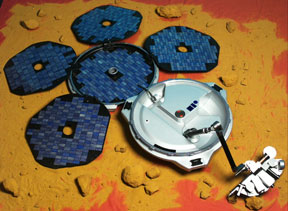
The European Space Agency (ESA) launched a mission to Mars called "Mars Express" in June of 2003. The Mars Express spacecraft has two parts: an orbiter that will circle Mars for at least one Martian year
...more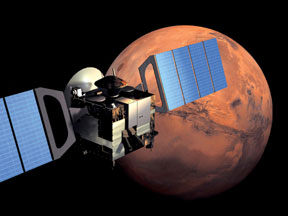
The European Space Agency (ESA) launched a mission to Mars called "Mars Express" in June of 2003. The Mars Express spacecraft has two parts: an orbiter that will circle Mars for at least one Martian year
...more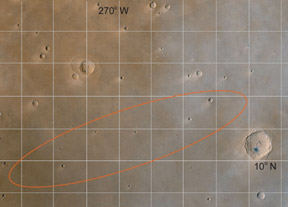
The European Space Agency (ESA) launched a mission to Mars called "Mars Express" in June of 2003. The Mars Express spacecraft has two parts: an orbiter that will circle Mars for at least one Martian year
...more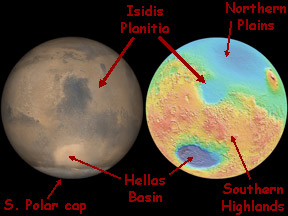
Isidis Planitia is flat plain within an ancient impact crater on the surface of Mars. Isidis Planitia is about 1500 km (930 miles) across. It is just north of the Martian equator near the center of the
...more
Unlike that of the Earth, the Martian climate is significantly influenced by the eccentricity of the Martian orbit. In spite of the significant influence the orbit plays on Martian climate over the years
...more


